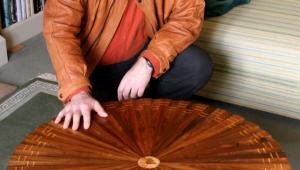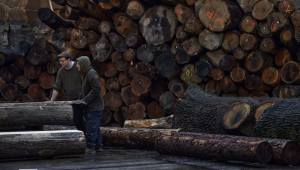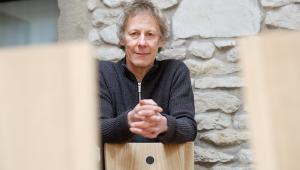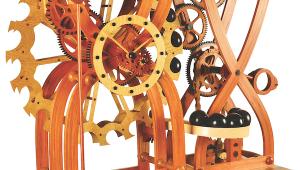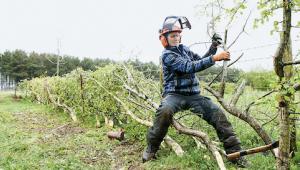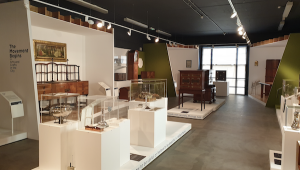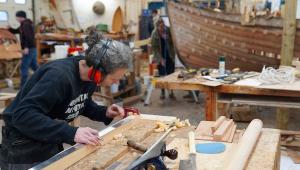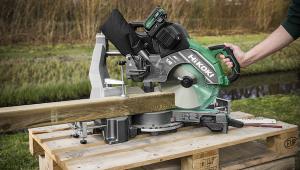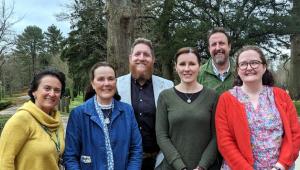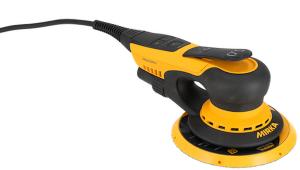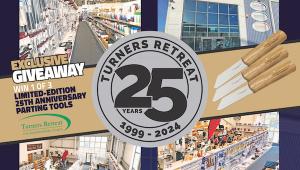Traditional craftsmanship & creativity
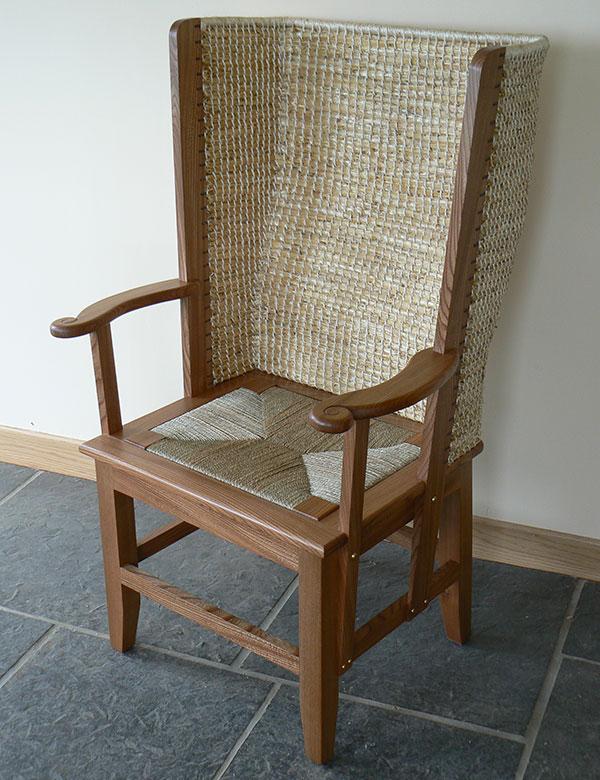
Orkney is an archipelago comprising a series of roughly 70 islands and skerries, located six miles from the North-East tip of the Scottish mainland. Much of life in Orkney in former times was based around the traditional crofting system. Existence was often a struggle and lacked many of the luxuries we have today.
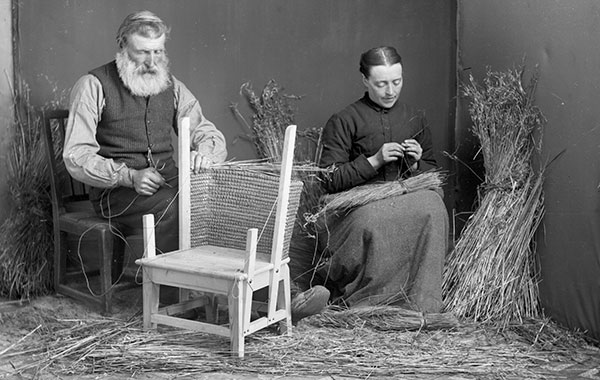
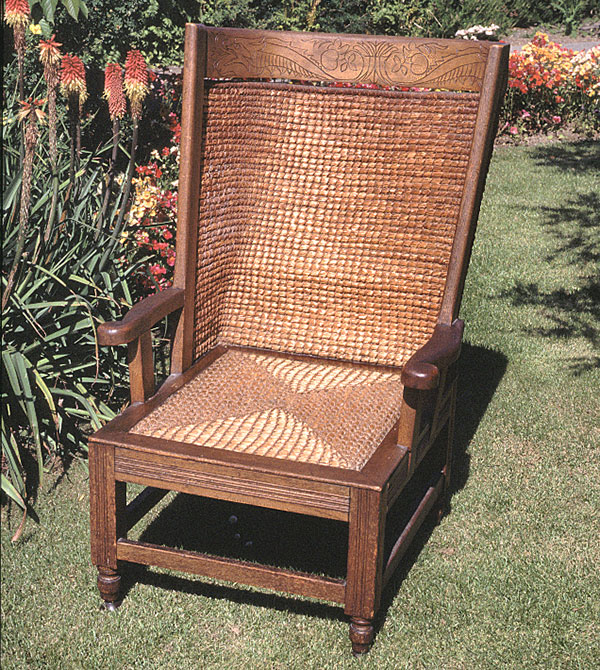
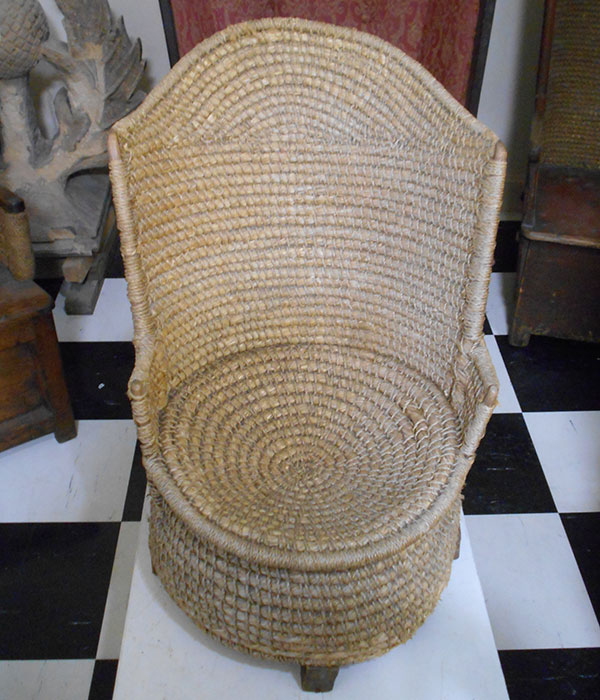
Most things in the Orkney croft were either home-made, or locally produced by the resourceful islanders. Orkney had few indigenous trees. Wood – sometimes referred to as Orcadian gold – always remained a real scarcity for the crofters. As a consequence, many items of furniture and other household objects had to be made from reclaimed wood or driftwood by the enterprising islanders. Nothing was ever wasted; even the leftover straw from the black oats grown to feed livestock was employed in the design and making of the Orkney Chair.
Simple & functional
The Modern Orkney Chair has evolved and is regarded today as one of the most iconic pieces of Scottish vernacular furniture. Although there is little official documentation on their origins, the chair’s heritage appears to stretch back hundreds of years and arose from very humble beginnings. They were initially designed to be simple and functional pieces of furniture and were created using materials gathered from the natural environments of the islands.
The early stools were made entirely of straw and were round in shape, with the only wood being used in the feet. Later the design developed into a low chair with a straw back some 2ft tall. Gradually the design evolved, with reclaimed wood or driftwood being used to form a basic framework. A hood was added to shelter the sitter from draughts and drips from the leaky croft roof. The first wooden seated chairs to emerge were square and not round,with no covering of straw on the chair base.
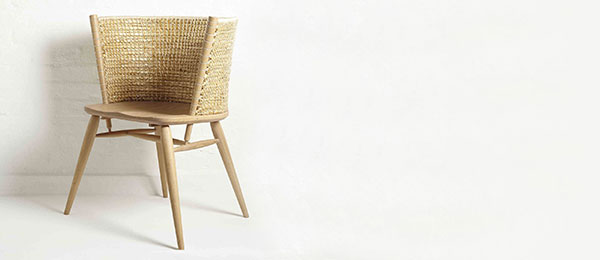
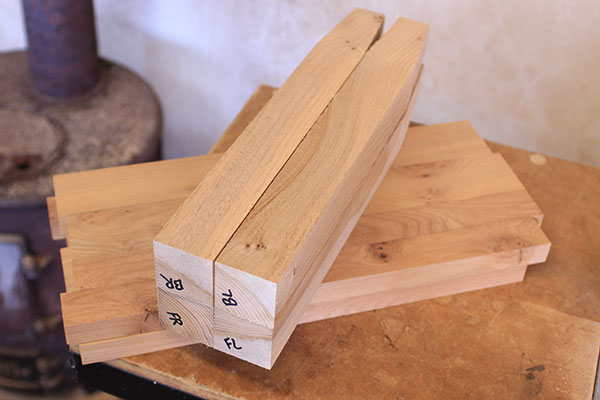
When the Orcadians first made their own furniture, there was no set design. Every maker had their own style and size preference and used the materials that were at hand. The chair was purely functional, and was sometimes referred to as a ‘warming chair’. This was placed near the hearth in the croft home. Its high back blocked out the cold draughts while enveloping the sitter in the comforting heat of the fire. Straw acted as a good insulator and shaped in time to the small of the sitter’s back. In some designs, a drawer was added to provide additional storage space for personal items such as a bible, a half bottle of whisky, fishing hooks or even knitting. As one observer put it: “A lot of time was spent round the peat fire in the centre of a room as it gave off warmth and light. The smoke was not as thick near the ground. The fire burned day and night ensuring the family kept warm.”
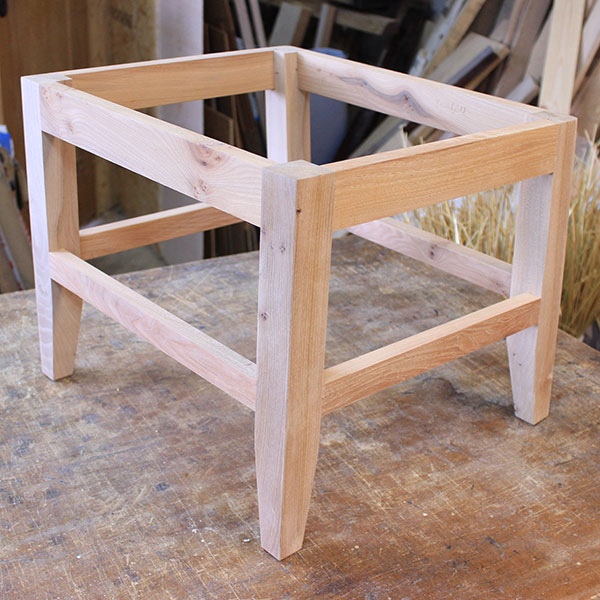
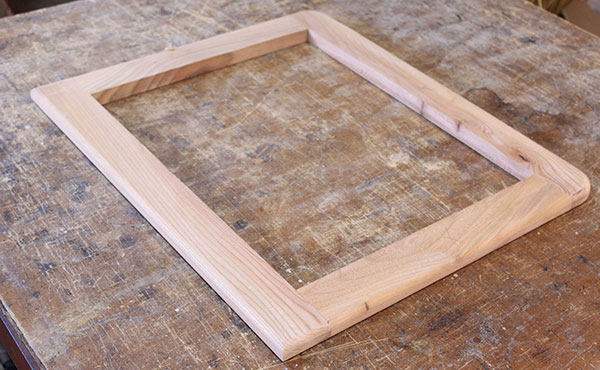
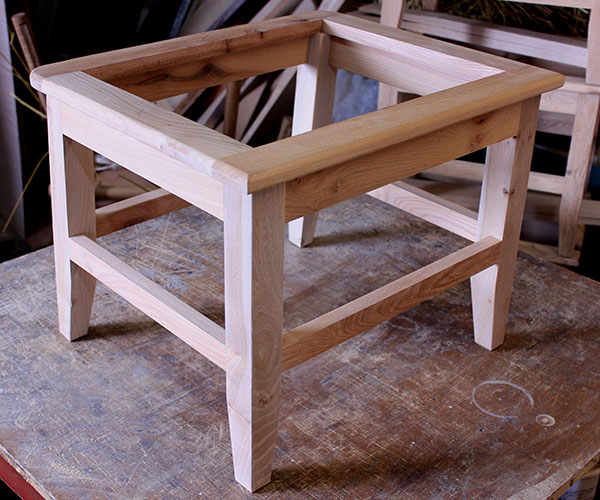
In 1876, a local craftsperson called David Munro Kirkness realised the potential of producing a quality-made Orkney Chair for the Victorian consumer market. Not only did he use quality materials, he also standardised designs, making the Hooded, the Gentleman’s, the Lady’s and Child’s chair. These designs became the templates for ‘the Modern Orkney Chair’, which is still produced today. Several factors helped to promote his enterprise, such as the growing tourist market, which rapidly increased with the improvements to transport in the late 19th century.
The foundation of the ‘Scottish Home Industries Association’ by Countess of Rosebery - the wealthiest woman in Britain - also created great interest in the traditional hand crafts of Scotland and in 1890, Kirkness was invited to submit two Orkney straw chairs to be part of the ‘Scottish International Exhibition’ in Edinburgh.
The chairs generated widespread acclaim, as their hand-craftsmanship and vernacular design had a natural affinity with the ongoing Arts and Crafts movement at the time. The chair also coincided with a romantic view of Scottishness at the turn of the century, which centred on the idea that a well-crafted object could embody a local or national identity.
By 1909, retailers such as Liberty of London were ordering 40 chairs a month. 20 years later, the Orkney Chair had become the workshop’s main product and was sold to fashionable clientele far removed from local Orkney families. After David Kirkness died, Reynold Eunson, a fellow carpenter, took over the workshop in 1956 and continued his prestigious work.
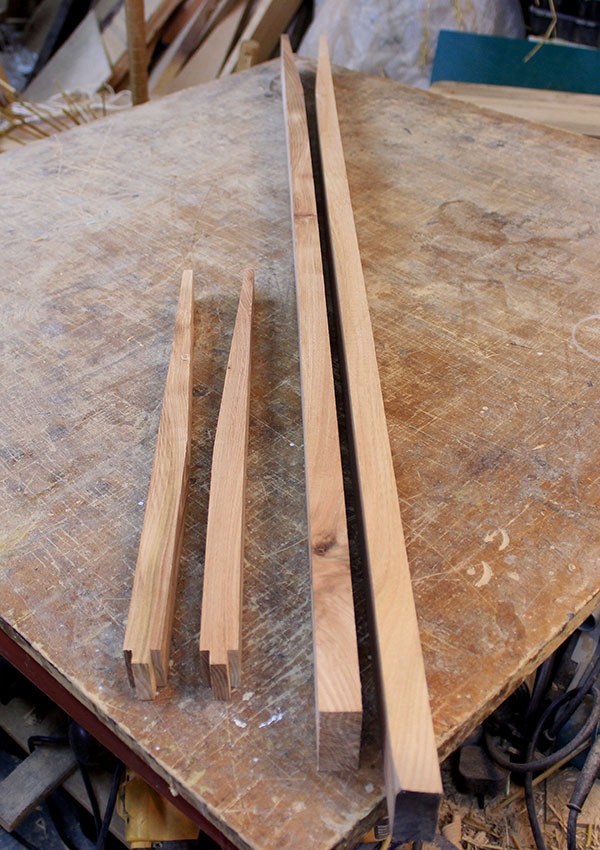
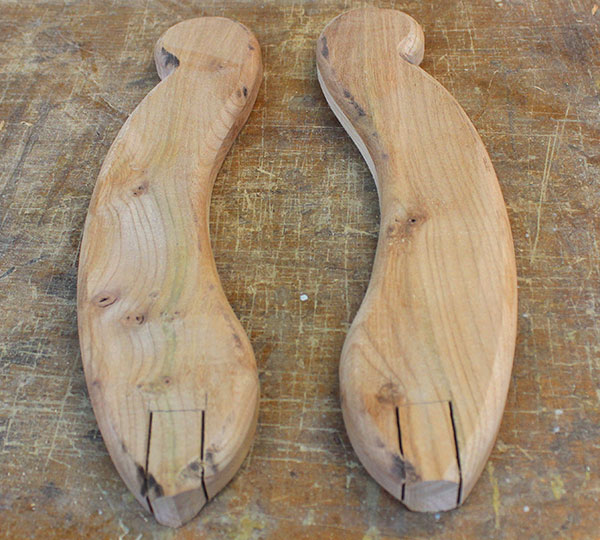
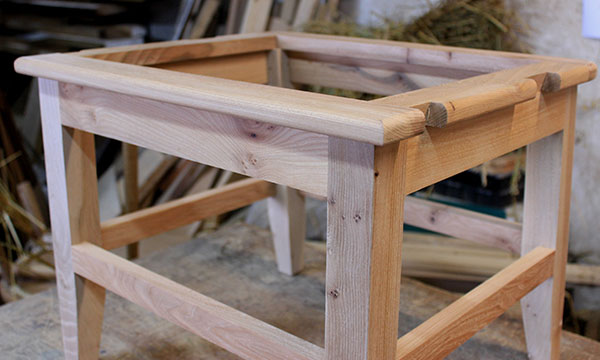
Carrying on a tradition
Today only a few highly skilled craftsmen in Orkney make Orkney Chairs. At the age of 26, Kevin Gauld set up ‘The Orkney Furniture Maker’, after serving a lengthy apprenticeship with a well-known furniture maker who had an excellent reputation for craftsmanship. Kevin continues to produce high quality traditional furniture as well as creating his own new styles evolved from traditional designs. He uses only the highest quality timber, including oak, mahogany, ash and Scottish hardwoods, felled from sustainable timber. His workshop in St Ola is located just outside the city of Kirkwall, which is also the Isle’s capital, and overlooks the picturesque Kirkwall Bay.
“When I set up my own business, I always had the ambition to carry on making the traditional chairs,” says Kevin, “but I was also very keen to develop, design and create my own ideas as well.” Kevin explains how the traditional Orkney Chair has become more than a piece of furniture and how it tells the story of a people, a time and a place. Today, he has an individual approach to making furniture, which combines a mix of traditional skills and modern machinery.
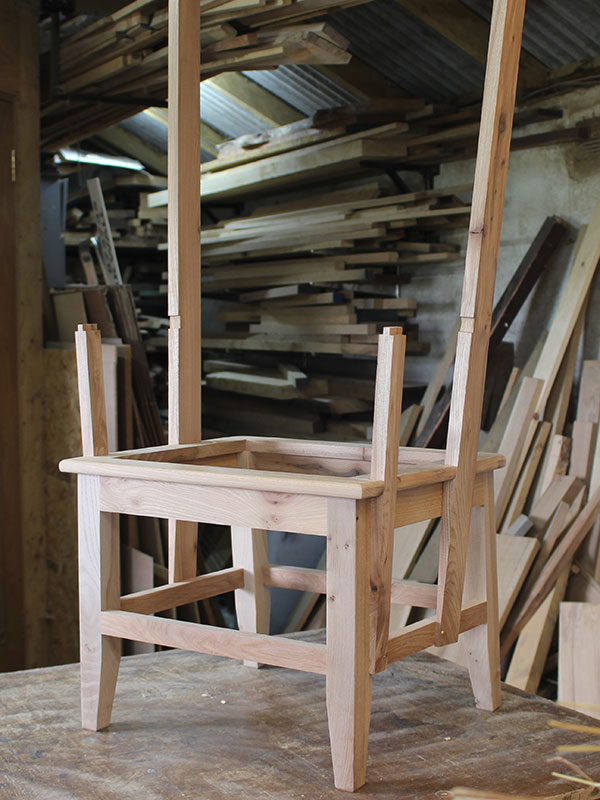
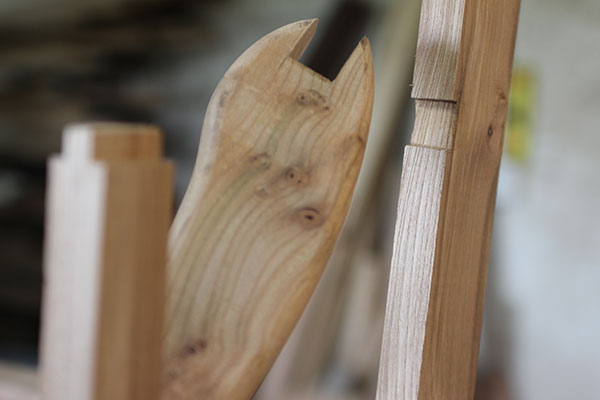
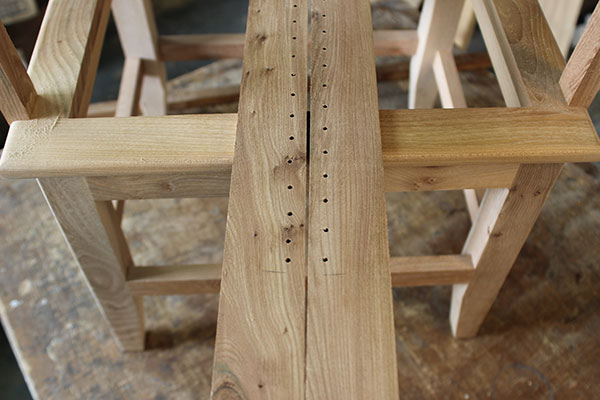
In 2012, Kevin was invited to join The New Craftsmen, a network of makers and innovators who use traditional skills in a modern way, and collaborated with Gareth Neal, a London-based furniture designer. The result was The Brodgar Chair; a contemporary take on the traditional straw-backed Orkney chair. Created for The New Craftsmen, this successful innovation combines elements of the Windsor chair with Orkney’s straw-back design. The Brodgar Chair (photo 4) has become such an iconic piece of design and craftsmanship that 2020 saw it become part of the permanent display at the V&A, London.
Construction of a traditional Modern Orkney Chair I’m anxious to learn more from Kevin about the actual construction of a traditional Modern Orkney Chair, which many have described as a ‘design classic’. “It’s quite a simple frame,” Kevin tells me “with four uprights attached. It has two back uprights to which a high straw back is stitched.” This traditional construction has four legs with four rails, top and bottom, which are mortised & tenoned into the legs. The two back legs are splayed. It has a solid wooden seat for the frame, but for some clients, a woven seagrass for comfort is sometimes preferred. First the leg and rail components are cut and planed to size, then the two inside faces on the bottoms of the legs are tapered. Tenons are next cut into the ends of each rail and mortises cut into the legs. The back legs of the chair taper outwards so these rails and mortises are cut at an angle to achieve this (photo 5). The base for the chair is then glued and clamped together (photo 6).
The outer frame for the seat is then made (photo 7). This is also mortised & tenoned together and the outside edges of the frame rounded over before attaching it to the chair base. The seat is then attached to the chair base (photo 8). The arms and uprights are next made (photos 9 & 10). The arm uprights have a tenon cut into the end of them for attaching the arm. All the uprights have a taper cut into the bottom to make them splay outwards from the chair base when they are attached. The outside edges of the arms are rounded over to soften their appearance. Notches are then cut out of the outer seat for the uprights to fit into (photo 11). The arm uprights are vertical and the back uprights are angled towards the back of the chair.
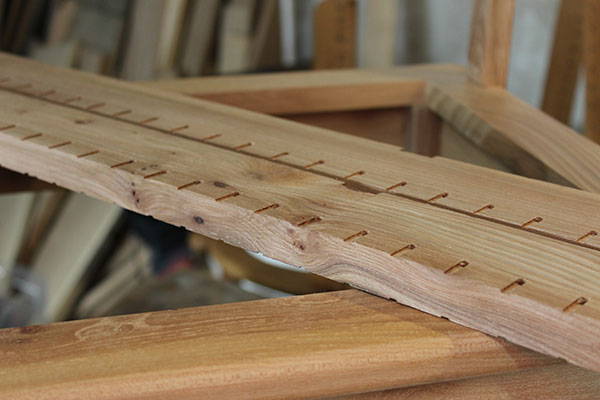
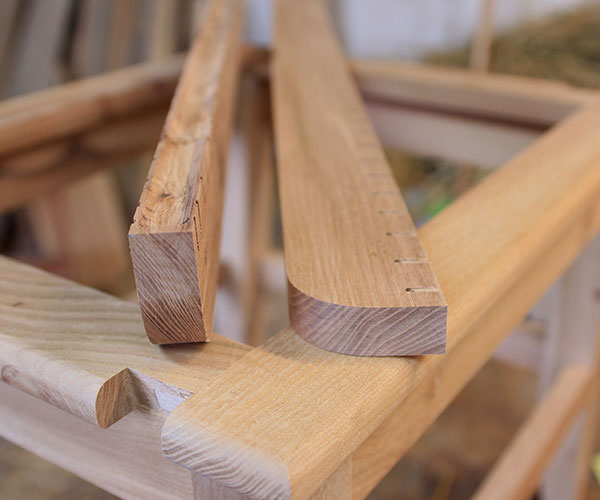
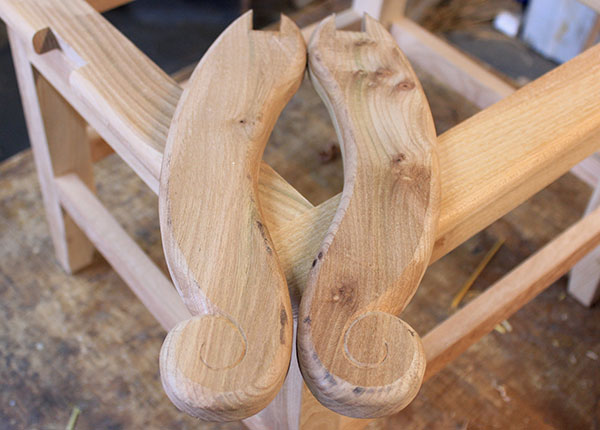
All of the uprights are temporarily attached so that the joint for the arms can be marked on the rear uprights (photo 12). A lap joint is next cut to attach the arm to the back upright (photo 13). Holes are drilled into the back upright, which will be used to tie the straw work to the chair (photo 14). Grooves are cut for the string to sit in from the hole to the back of the upright (photo 15).
A groove is then cut into the back of the upright for the straw work to fit into. The tops of these uprights are also cut to length and rounded (photo 16). Scrolls are next to be carved into the arms (photo 17). All of the uprights are attached to the chair base with screws (photo 18) and Kevin uses the finest furniture oils to finish and bring out the beautiful texture in the wood before the straw work begins (photo 19).
The oat straw
Kevin grows his own oat straw on his family’s farm. Black oats were originally used as they successfully grew in poor soil, but today Kevin uses an improved variety for his straw work. “We sew in April after the field has been ploughed – weather permitting, of course.” During the summer months, the young oats benefit from the long Orkney summer days of near constant daylight, known as the ‘simmer dim’. When September comes, the crop is ready to be specially cut.
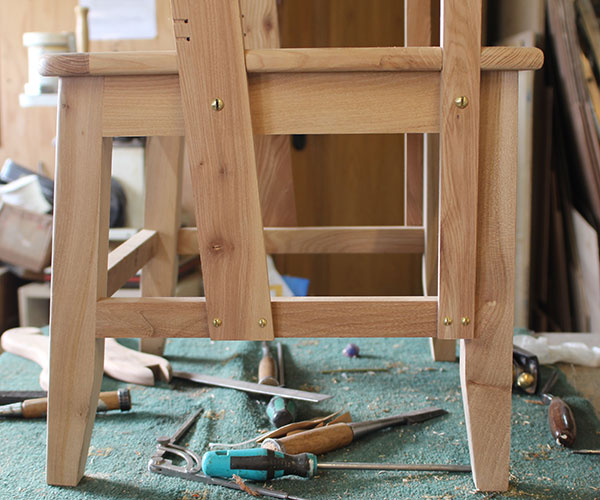
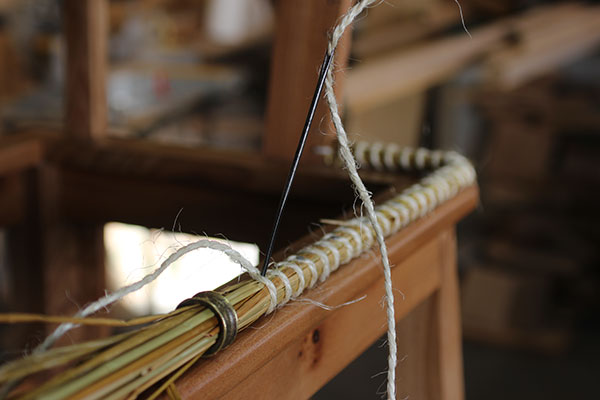
In order to ensure peak condition, a scythe is used to cut the crop. The straw is tied into individual sheaves and placed in ‘stooks’ so that it can dry and ripen further. It’s during this time that the straw will develop its beautiful golden colour. However, before it can be used, each individual piece of straw has to have the oats and outer leaves laboriously removed.
Incorporating the straw back
The making of the straw back starts with the first bundle of straw being tied in and nailed horizontally on the back of the seat, to form a continuous rope. The straw is then built up row by row, each bound by sisal string and sewn into the row below. A ‘fail’ needle, like those used on sailing boats, is used for the stitching and a copper ring ensures each row is the same thickness (photo 20).
Straw is regularly fed into the ring to maintain a consistent thickness of each row and they are secured to the chair uprights on both sides. The top edge (the whipping row) is then finished with a cover of tight stitching. The key to the work, Kevin says, is making sure “your rows are consistent and the stitching is sufficiently tight” (photo 21). Once the chair back is built, it is clipped with scissors to remove any loose bits of straw before being blow-torched to singe any unnecessary remnants.
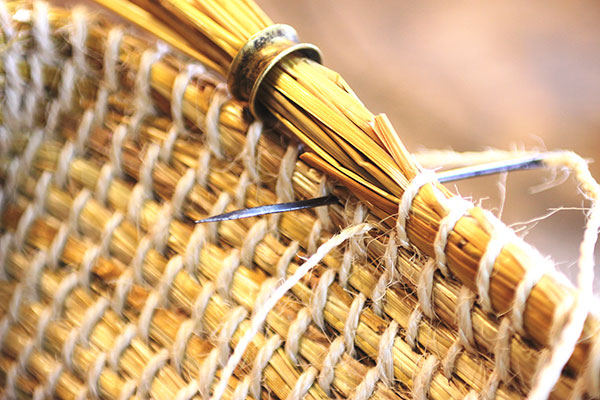
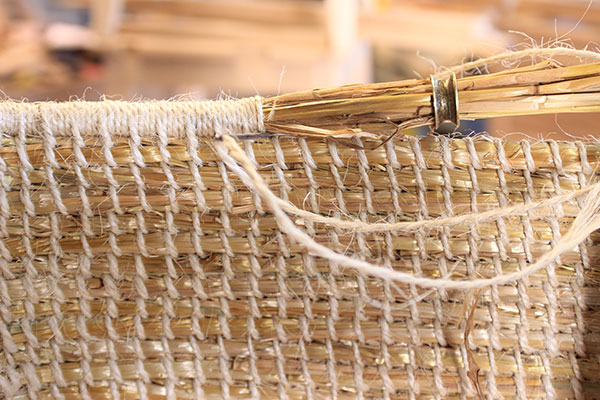
21 The top row of straw is fully bound inside sisal string, which helps to add strength and durability
The construction of each Orkney Chair takes about two weeks and represents 80 to 100 hours, but for Kevin, this is still a real labour of love knowing “the work produced will be cherished, valued and cared for by the people who buy it.” Unlike the throw-away society of today, he knows many of the chairs will become heirlooms, passed down from one generation to another and imbued with memories while containing a real piece of history that has roots in its Orcadian past.
FURTHER INFORMATION
The Orkney Furniture Maker, Kevin Gauld, is the creator of beautiful hand-crafted furniture ranging from the traditional Orkney Chair to more contemporary design-led pieces. Find out more here: www.orkneyfurniture.co.uk
- Log in or register to post comments
